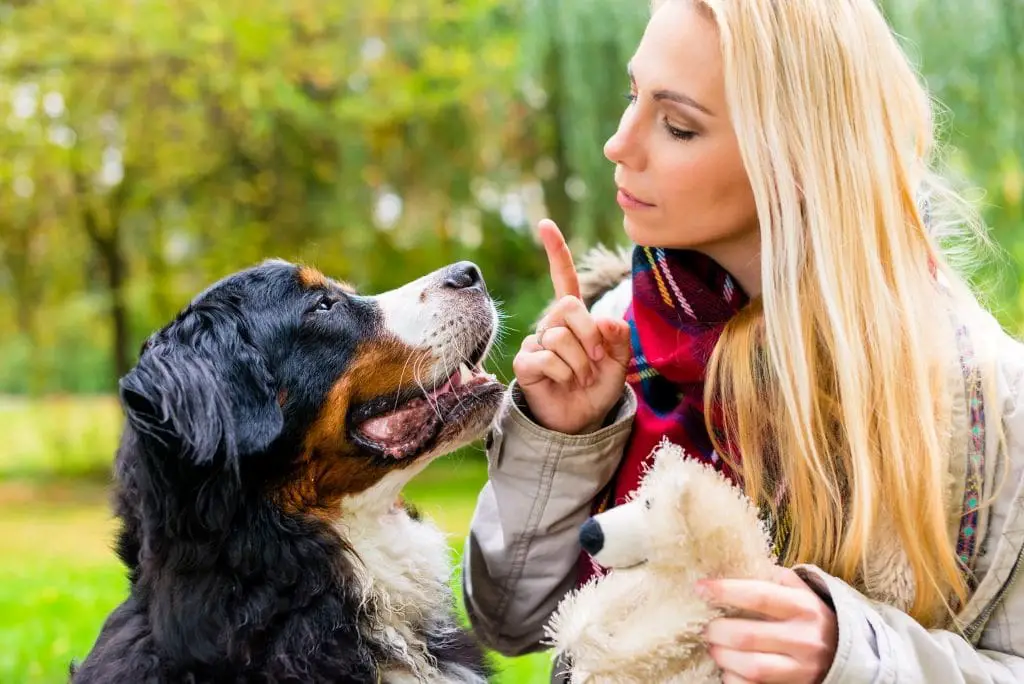Dachshunds are usually not the breed we think of when we think about obedience, and they can be notoriously playful and withstand strict training regimes. So, can Dachshunds be obedient?
This breed ranks 92nd and falls into the “average” category of breeds assessed for working and obedience intelligence. This means the answer to the question is both Yes! And No!
Every dog, even dogs within the same breed, have their own unique personality. Some can be naughty and mischievous, while others have a mild temperament.
If you’re really keen on training your Dachshund and it’s a bit naughty, then you may have to put in some extra effort to have them trained, but it’s not impossible. So if you are asking yourself, ‘are dachshunds difficult to train?’ No! They aren’t difficult to train.
Here are a few tips on getting started and the dos and don’ts of making your furry little friend house trained.
When to start training a Dachshund?
A Dachshund puppy can be quite the energetic ball of fur but does not necessarily require massive amounts of playtime. The puppies will usually require about 5 minutes to 10 minutes in the initial 3 months, and you can add 5 minutes for every month of their age.
Once the puppies have received their first shots at 4-6 months, you can start taking them out for walks. Do not overwork the puppies before their bones fully develop since it could impact their development. You can begin training the puppies at 8 to 12 weeks old.
If you’re wondering, can dachshunds be trusted off-leash while you take them on their walks? You’ll need to keep them on a leash since they tend to run off.

Beginners Training Regime
It’s better to start early with this breed since the pups are more manageable to train than the adults. Dachshunds were originally bred for hunting and raised to think for themselves, which may be why they aren’t that easy to train. But, with a bit of effort and consistent attention, they can be made to obey basic commands.
Read on for a few things to keep in mind when you start obedience training for your little one.
1) Positive reinforcement
Since time immemorial, positive reinforcement has been used to condition and teach young minds. It’s no surprise that this kind of tactic will be a great way to train a Dachshund puppy.
You can show appreciation and provide treats for good behavior and ignore undesirable behavior. This is a good trick for potty training too. You should start potty training early since it may be challenging to housebreak once they are older.
2) Socialize
You’ll have to socialize your Dachshund from a young age since poorly socialized Dachshunds tend to become jealous and start acting out if they don’t get attention. They are great with their owners and other Dachshunds but can get a little aggressive towards other dog breeds due to their size, but you can curb this at an early age.
If you’re worried about your little one being a bit too shy, you can begin the process by taking them for walks to dog parks, having friends with puppies come over, or you can enroll them in puppy kindergarten.
3) Keep it short
Make sure your training sessions don’t go for too long. Dachshunds have been raised for hunting, so they get distracted quickly; therefore, the shorter the sessions, the better. You can keep the sessions for about 10 minutes at a time.
4) Keep them engaged
The puppies require a lot of playtime; they are balls of energy, so you will have to keep them entertained to keep them focused. You can take a break in between training sessions for a bit of playtime so that they do not get bored.
5) Basic Commands
You’ll have to start with basic commands if you want to train your Dachshund, and it’s better to pair the training with positive reinforcement. You can start off with simple commands like “come,” “Sit,” “speak,” etc.
6) No Barking
Dachshunds are inclined to bark a lot, and if you pay attention while they bark, they may be encouraged to bark more to gain your attention. To curb their barking, the best thing you can do is ignore them.
Another method is to distract them with a toy when they bark. One thing you should avoid is yelling at them while they bark. The puppies will assume that you are joining them and make more noise.
7) Boundaries
It’s better to set strict boundaries to avoid confusing the puppies. Make sure you set clear rules of what your little one is allowed to do and not do and stick to it.
8) Consistency
Dachshunds can be very mischievous and require their owners to be a bit firmer. You’ll have to hold your ground and maintain your stance, and it’s crucial to decide what rules you wish to set and stick to them.
How to use treats?
Dachshunds love treats but can gain a lot of weight, so you’ll have to watch how much you feed them. You can opt for purchased food treats or homemade snacks, but they should be easy to chew and small so that their focus is not distracted by the goodies.
You should make sure you give the treats only when your little one obeys an order. This will help you’re the puppies learn faster, and they will pay attention more, knowing they will be rewarded.
Do’s and don’ts
- Make sure you use a firm voice, but you should never shout or be violent with them. Dachshunds are usually not badly behaved but will start acting out in case they feel threatened or do not get enough attention.
- Make sure you are persistent with their training. You should not relent when it comes to teaching them obedience and other tricks. Remember to always be positive even on the tough days.
- Make sure to use the right amount of treats when he behaves well and responds to your command. Do not give rewards if they misbehave or do not listen to commands.
Can Dachshunds Be Obedient – Conclusion
It may not always be easy to train a Dachshund, but if you follow these few tips and stay true to all the rules you’ve set, then you’ll see great results.
It’s better you start young with their training sessions and set the proper boundaries. Also, don’t forget that both you and your furry little friend should have fun during this process, so include playtime during your sessions.







